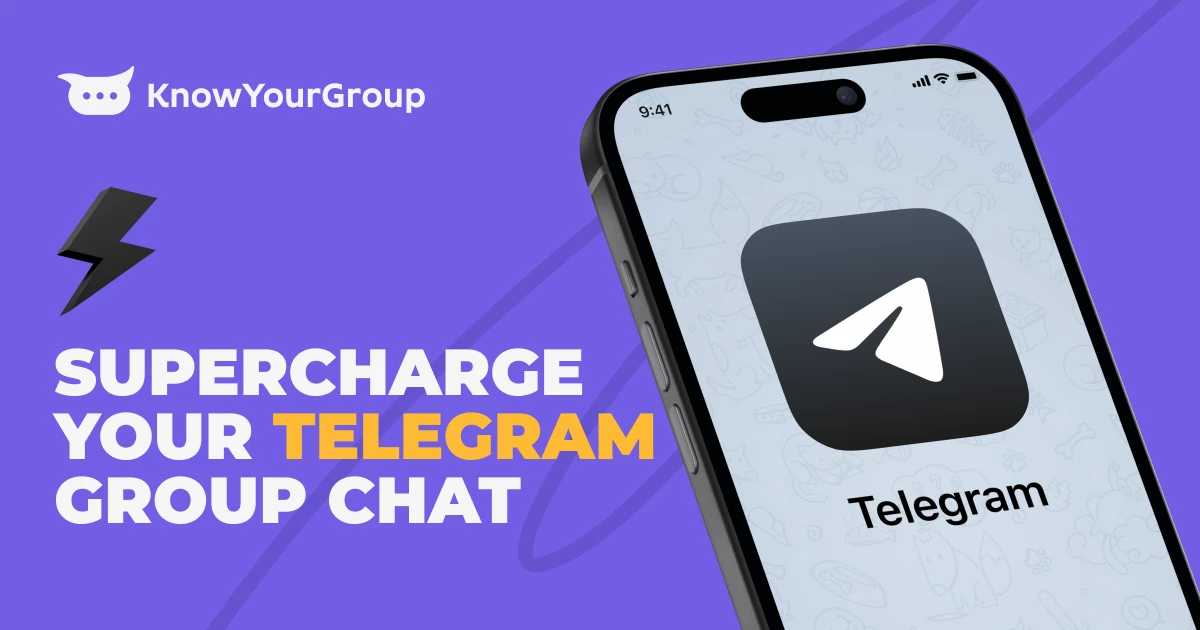Tech
Describe Web 3.0. Blockchain-Based Internet Era

No matter what website you visit, the forum you join, or the social media platform you use, Web 3.0 is everywhere. People who do not share the broad enthusiasm for Web 3 refer to it as a “new buzzword” with a hint of contempt. They are unquestionably the minority, though. Everyone talks enthusiastically about it because they can see what is ahead.
Blockchain, cryptocurrencies, non-fungible tokens (NFT), and a host of other terms that, if you are not in the know, will make your head spin, come after Web 3.0. Of course, you also need to be knowledgeable on the subject! We are unsure of Web 3.0’s exact lifespan or whether Web 4.0 will eventually take its place. However, your firm won’t last very long if you don’t understand the fundamentals of technology.
Web3: What is it? Explained: The Decentralized Internet of the Future
The World Wide Web once had a huge impact on the “market” for knowledge available online. Now, thanks to the network, anyone with Internet access can access information from anywhere in the world. The fundamentals of communication have dramatically changed as a result of Web 2.0. Web 3.0 also emphasizes values and meanings more. Web 3 is a backend revolution, while Web 2 is an interface revolution.
In 2014, the phrase “Web 3.0” itself was coined. Gavin Wood, a co-founder of Ethereum, developed it. Simply, Web 3.0 replaces Web 2.0’s centralized storage with a decentralized method of online communication. The level of protection and safety of personal data is thereby greatly raised. And the blockchain system makes it all possible.
Describe Blockchain
Blockchain is a database that differs from other decentralized networks with a similar structure. There isn’t a single owner who has the legal right to utilize the data stored there, whatever he wants. Instead, the blockchain database is managed by all participants collectively and is open to all users. At the same time, it is now far more difficult to take this surface data.
Every action you do, including online buying and social media use, is supposed to be handled by the same safety procedures, increasing both your privacy and openness.
The blockchain system protects data using the cryptography concept; data is kept in blocks that line up in a chain to form a single whole. Thus, the name. Each block has its own timestamp, data, and hash pointing to the content in order to distinguish them somehow.
Those with enough tokens or cryptocurrency can manage these shares. You are eligible to vote on the network if you possess a sufficient number of these tokens. Holders of governance tokens can use their funds to vote on issues like the direction of the decentralized lending protocol.
What does Web3 mean in crypto?
You’ll note that cryptocurrencies are frequently discussed when web3 is brought up. This is because a lot of these systems heavily rely on cryptocurrencies. Additionally, it offers monetary compensation (tokens) to anyone who wishes to design, oversee, support, or enhance one of the projects.
Many services may be provided using these protocols:
- Calculations
- Storage
- Bandwidth
- Identification
- Hosting
Similar to today’s cloud service providers, service users often pay to use the protocol.
The market for decentralized finance (Defi), which was made possible by cryptocurrencies, is thriving and steadily expanding. Applications for Web 3 are frequently built using the Ethereum platform, which, like bitcoin, compensates users for the upkeep of the network. The market value of this cryptocurrency, called Ether, is $511 billion.
The apps themselves may also have associated tokens that serve as voting shares that control how the apps are developed, including how much they cost.
A Web3 app: what is it?
Applications developed for Web 3 run either on blockchains or in decentralized networks made up of several peer nodes (servers), or they run in a combination of both, creating a crypto-economic protocol. These applications are distributed.
Distributed apps (or dApps), created on the Ethereum blockchain, are at the core of Web3, and they reward users for maintaining it online. Dapps serve the same purpose for Web 3.0 as the App Store does for the current Apple environment.
On the DappRadar tracker, there are more than 8,700 decentralized applications that are currently operational. Games and various cryptocurrency trading sites are among them. Sometimes there is a blurring of the lines between the two because many games include exchanging non-fungible tokens, or NFTs, virtual characters, or collectables that can fetch exorbitant prices in exchange for winnings.
The majority of decentralized applications are now used for trading NFTs or cryptocurrency exchanges. Only a small portion of dApps are games that may be played for cryptocurrency rewards.
NFT and Web3
In relation to gaming… Gamers in the Web 2.0 era can only dislike how many problems are in the upcoming instalment of their favourite game. With Web 3.0, players can really create the game themselves by using their tokens to vote on the necessary improvements. In the gaming sector, NFT is likewise a rising star. Gamers are shopping for virtual reality-related goods.
Additionally, everything may now be tokenized, be it a piece of music, a painting in a museum, a meme, or even your cat. Therefore, one of the infamous NFT Rare Bored Ape Yacht Club was sold for $3.4 million in 2021!
Anyone can now financially contribute to the development of a game, unlike in the past when venture capitalists used their own funds and dictated to the designers the conditions that would allow profit to be made in the shortest amount of time. The business announces the release of x tokens, distributes 10% to early investors, offers 10% for sale, and reserves the remaining tokens for future contributions and project funding.
This idea will probably be perceived by some as being too similar to a financial pyramid. However, buyers have total transparency about what is happening because all blockchain data is completely public and accessible. Network marketing firms that do not abstain from fraud also keep all of this a secret.
Opportunities, Problems, and Challenges with Web 3.0
A decentralized internet is appealing as a concept. As soon as we think of the “oppression of the capitalists” that controls large portions of our everyday life, we immediately envision freedom. But not everything is as bright as it seems.
Who is now making the largest investments in Web 3.0? Large IT firms, hedge funds with multimillion-dollar funding, and venture capitalists. As a result, the distribution of modern blockchain networks is uneven. In other words, only a small number of powerful investors own the encryption keys for enormous sums of money. The fact that information is now kept in multiple locations makes it much more challenging to manage. However, if you simultaneously choose numerous figureheads who will take part in the decentralization plan, the entire idealistic notion is for nought.
Some analysts go a step further and contend that Web 3.0 is really just the same centralized organization under a different moniker. Elon Musk, who needs no introduction, claims that web3 social media app development is more of a “marketing buzzword” than a true technology.
It’s important to note that certain cybersecurity professionals stress that while it may be harder to hack data in the blockchain format, it is also nearly impossible to avoid such an attack. In the end, the problem is not whether individuals can access it quickly but rather if they are aware of how to manage their data safely. The rampant theft of cryptocurrency is one illustration of such an issue.
Even though many projects enable online chat rooms, they rarely even provide contact information. Money could be gone forever if you transfer it to the wrong account due to a typing error. As if you had called the bank’s customer service, you would not be able to resolve the issue. After all, in Web 3.0, God assists those who help themselves, whereas, in Web 2.0, the bank is responsible for your financial stability. Freedom comes with a burden that not everyone can handle.
Many Web3 needs, like distributed architecture and decentralization, are thought to be better implemented without blockchains, according to sceptics, since nothing is fundamentally altered by creating a decentralized system built on a centralized one.
As a result,
Does Web 3.0 technology, which has not yet cemented its place in modern society, therefore no longer justify itself? As with every novel idea, there will always be fraudsters looking to profit, as well as devotees who will produce truly fantastic things. So, is Web 3.0 a blessing or just Web 2.0 with a few updates? The next ten years will demonstrate this. Whatever the situation, much depends on how the major actor’s act.
Tech
Boost Your Telegram Channel Promotion with KYG’s Services

Telegram channels are powerful tools for businesses aiming to enhance brand awareness, share valuable content, build active communities, improve customer relationships, and boost sales. However, effective telegram promotion and management requires strategic efforts. This article explores how KYG’s services can support your Telegram channel promotion, leveraging advanced tools and strategies to maximize engagement and growth.

Services for Telegram Channel Promotion
Creating engaging content is critical for any social media platform. On Telegram, diverse content types such as text, media, and polls can captivate your audience. KYG’s services can assist in developing a content strategy that resonates with your target audience. With tools to set clear objectives and KPIs, KYG ensures you monitor key metrics and adjust your strategy based on performance and feedback.
Cross-Promotion Tactics
Expanding your reach through cross-promotion is vital. KYG supports cross-promotion efforts by providing insights into the most effective platforms for your audience. Whether you’re leveraging other social media channels or partnering with similar communities, KYG’s analytics help identify and optimize these opportunities, ensuring you attract engaged and interested users.
Influencer Partnerships
Influencer marketing is indispensable for boosting engagement and communication. KYG’s platform aids in identifying influencers who align with your brand values and target audience. By facilitating clear collaboration proposals and tracking campaign results, KYG ensures that your influencer partnerships are both effective and measurable, driving more users to your Telegram channel.
Exclusive Offers and Contests
Offering exclusive content and running contests are proven methods to boost engagement. KYG can streamline the process of advertising these offers across various platforms, ensuring maximum visibility. Additionally, KYG’s analytics tools help monitor the effectiveness of these campaigns, providing valuable insights for future strategies.
Consistent Communication and Engagement
Maintaining an active community requires consistent engagement. KYG’s community management tools make it easier to plan and track communication efforts. By providing comprehensive analytics and personalized recommendations, KYG helps ensure that your Telegram channel remains vibrant and engaging. Responding to comments, rewarding active members, and monitoring community health are all simplified with KYG.
Why Choose Know Your Group
KYG offers a comprehensive suite of tools and services designed to support effective Telegram channel promotion. With KYG, you get:
- Advanced Analytics: Monitor engagement, growth, and performance with precision.
- Customizable Community Portals: Tailor your community space to reflect your brand’s identity.
- Streamlined Onboarding: Easily integrate new members into your community.
- Monetization Tools: Turn your engagement into revenue with various monetization strategies.
- Expert Support: Benefit from personalized recommendations and strategic growth insights.
Know Your Group ensures your Telegram channel thrives, driving engagement and achieving your business goals.
FAQs
What is the best way to create engaging content for a Telegram channel?
Utilize diverse content types like text, media, and polls, and tailor your content to your audience’s interests and needs. KYG’s tools can help set clear objectives and track content performance to make necessary adjustments.
How can KYG help maintain consistent communication on Telegram?
KYG’s tools streamline communication planning and tracking, making it easier to engage with your community regularly. Their analytics provide insights to improve engagement strategies continuously.
What makes KYG a good choice for Telegram channel promotion?
KYG offers a comprehensive suite of tools for community management, including content strategy, cross-promotion, influencer partnerships, and engagement tracking, all tailored to help your Telegram channel succeed.
Tech
Coingama Exchange Review

Coingama is emerging as a premier cryptocurrency exchange platform, designed to cater to both beginner and seasoned traders. With its user-friendly interface, advanced security measures, and comprehensive trading tools, Coingama aims to provide a seamless and secure trading experience. This review delves into the various features and benefits that make Coingama a standout choice in the crowded cryptocurrency exchange market.
User Experience: One of the defining features of Coingama is its intuitive and easy-to-navigate interface. The platform is designed with user experience in mind, making it accessible even for those new to cryptocurrency trading. The registration process is streamlined, allowing users to set up their accounts quickly and start trading without unnecessary delays. The dashboard is well-organized, providing users with all the necessary tools and information at their fingertips. Additionally, Coingama offers a mobile application, enabling users to trade on-the-go with the same level of efficiency and security as the desktop version.
Security Measures: Security is a paramount concern for any cryptocurrency exchange, and Coingama excels in this area. The platform employs a range of advanced security measures to protect users’ funds and personal information. These include two-factor authentication (2FA), encryption, and the use of cold storage for the majority of users’ assets, which significantly reduces the risk of hacking. Coingama also conducts regular security audits and updates to ensure that its security protocols remain robust and up-to-date. Users can trade with confidence, knowing that their assets are safeguarded by some of the most advanced security measures in the industry.
Trading Features and Tools: Coingama offers a comprehensive suite of trading features that cater to a wide range of traders. The platform supports numerous trading pairs, including major cryptocurrencies such as Bitcoin, Ethereum, and Litecoin, as well as various altcoins. This wide selection allows traders to diversify their portfolios and take advantage of different market opportunities. Coingama also provides advanced trading tools, including real-time charts, technical indicators, and market analysis, which help users make informed trading decisions. The platform’s trading engine is designed for high performance, ensuring fast and reliable execution of trades even during periods of high market volatility.
Liquidity and Fees: Liquidity is a crucial factor for any exchange, and Coingama ensures ample liquidity across all trading pairs, allowing for smooth and efficient trading. The platform has partnered with several liquidity providers to maintain tight spreads and minimize slippage. When it comes to fees, Coingama is competitive, offering a transparent fee structure with no hidden charges. Trading fees are kept low to attract more users, and there are various incentives and promotions available that further reduce the cost of trading on the platform.
Customer Support: Reliable customer support is essential for any trading platform, and https://coingama.com/ excels in this area as well. The exchange offers 24/7 customer support through multiple channels, including live chat, email, and a comprehensive FAQ section. The support team is responsive, knowledgeable, and dedicated to resolving any issues that users may encounter. This level of support ensures that users can trade with confidence, knowing that assistance is readily available whenever needed.
Educational Resources: Understanding the importance of education in trading, Coingama provides a wealth of educational resources for its users. The platform offers tutorials, webinars, and articles that cover various aspects of cryptocurrency trading, from basic concepts to advanced strategies. These resources are designed to help traders enhance their knowledge and improve their trading skills, making Coingama an excellent choice for both learning and trading.
Conclusion: In conclusion, Coingama is a reliable and efficient cryptocurrency exchange that offers a comprehensive trading environment. Its user-friendly interface, robust security measures, advanced trading tools, ample liquidity, competitive fees, and excellent customer support make it an attractive option for traders of all levels. Whether you are just starting out in the world of cryptocurrency trading or are an experienced trader looking for a dependable platform, Coingama provides the features and support needed to succeed. With its commitment to security, innovation, and user satisfaction, Coingama is well-positioned to become a leading player in the cryptocurrency exchange market.
Tech
Exploring the World of possiblyethereal

possiblyethereal is not just another online platform; it’s a digital sanctuary for seekers of wisdom, inspiration, and connection. Let’s delve into what makes possiblyethereal a unique and enriching experience for its visitors.
What is possiblyethereal?
At its core, it is a multifaceted platform that offers a blend of insightful content, community engagement, and personal development resources. It aims to transcend the mundane and explore the realms of the ethereal, sparking curiosity and fostering personal growth.
Content Categories on possiblyethereal
From thought-provoking articles to immersive multimedia experiences, it covers a wide range of topics. Whether it’s philosophy, spirituality, creativity, or wellness, visitors can find content that resonates with their interests and aspirations.
Unique Perspectives and Insights
What sets this apart is its commitment to offering unique perspectives and deep insights. Through diverse voices and unconventional narratives, the platform challenges conventional thinking and encourages exploration of the unknown.
Interaction and Participation Opportunities
Engagement is key at possiblyethereal, with opportunities for readers to interact through comments, forums, and collaborative projects. The platform fosters a sense of community where ideas are shared, discussed, and celebrated.
User-generated Content
A highlight of possiblyethereal is its emphasis on user-generated content. Visitors are encouraged to contribute their own stories, reflections, and experiences, creating a dynamic tapestry of collective wisdom and creativity.
Ethical Considerations and Transparency
In an era of digital information overload, It prioritizes ethical content creation and transparency. Clear policies ensure that content is authentic, respectful, and aligned with the platform’s values.
Personal Growth and Development
Beyond intellectual exploration, It offers resources for personal growth and development. From mindfulness practices to actionable insights, visitors can embark on a journey of self-discovery and empowerment.
Conclusion
It is more than a website; it’s a portal to a world of infinite possibilities and profound discoveries. Whether you seek intellectual stimulation, spiritual insights, or simply a sense of belonging, possiblyethereal invites you to explore, engage, and evolve.
FAQs
Can I contribute my own content to possiblyethereal?
- Yes, It welcomes user-generated content. You can share your stories, insights, and perspectives with the community.
What types of topics does possiblyethereal cover?
- It covers a wide range of topics, including philosophy, spirituality, creativity, wellness, and more.
How can I engage with the possiblyethereal community?
- You can engage by commenting on articles, participating in forums, and joining collaborative projects.
Are there resources for personal development on possiblyethereal?
- Yes, It offers resources such as mindfulness practices, actionable insights, and inspirational content for personal growth.
What are possiblyethereal’s policies on content creation and transparency?
- It maintains ethical standards in content creation and ensures transparency in information dissemination, aligning with its values of authenticity and respect.

 Others10 months ago
Others10 months agoDavid T Bolno: Why Giving Back To The Community Is So Crucial

 Travel10 months ago
Travel10 months agoPractical And Essential Car Interior Accessories To Add Comfort And Convenience To Your Drive

 Travel10 months ago
Travel10 months agoBusiness Visa for CANADA

 Business10 months ago
Business10 months agoTop Reasons Why you Need to Consider Outsourcing Real Estate Photo Editing

 Health10 months ago
Health10 months agoGarlic Is The Best Vegetable To Treat Heart Problems

 Business10 months ago
Business10 months agoDead And Co Setlist What They Played At The Gorge Amphitheatre

 Fashion10 months ago
Fashion10 months agoTips For Choosing The Right For Engagement Diamond Rings

 Tech10 months ago
Tech10 months agoThe Best Way to Never Get Lost: Buy Wayfinding Signs!
